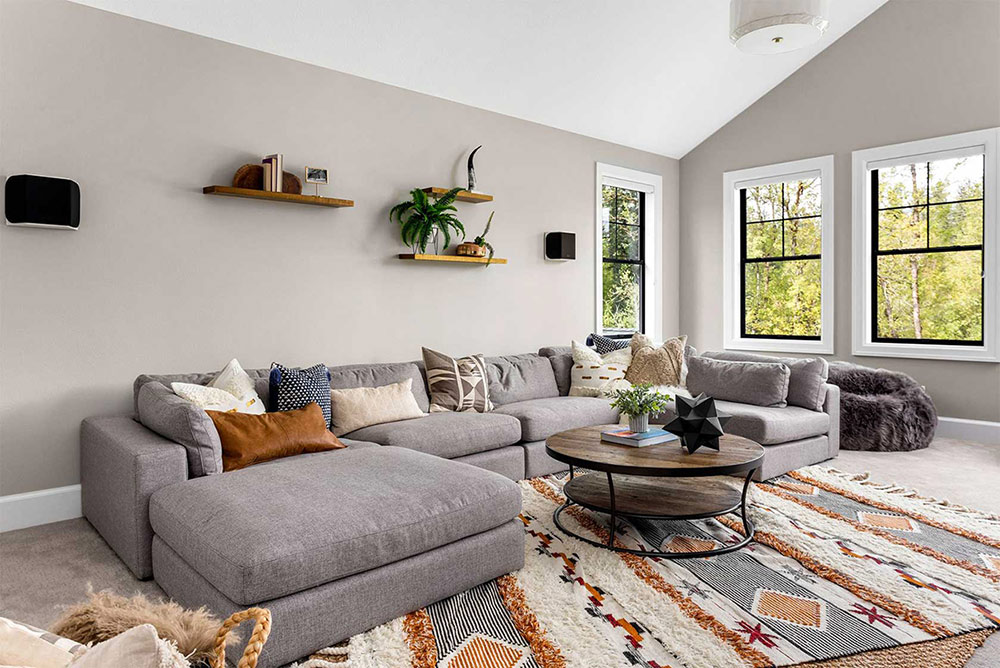What is an Oriental Rug?
First, it is important to know what an oriental rug actually is. Simply put, an oriental rug is any carpet hand-knotted in Asia. This includes the popular category of persian rugs as well.
These rugs come from countries like Iran, China, India, Russia, Turkey, Pakistan, and Tibet. As the top exporter in Asia, China is the primary producer of oriental rugs. While China has a centuries-old tradition of rug making, its recent rise to prominence in the field of exports has fueled new methods of rug making.
All Oriental rugs are hand woven using a loom. Yarn threads are painstakingly knotted into the weave, creating unique and ornate designs and patterns. While modern technology has largely mechanized the process of making and dying the yarn, to qualify as a true Oriental rug, it must be woven by hand. This attention to detail creates the value and scarcity, as each rug is unique and takes many hours of hard work to create.
Oriental Rug Design
Oriental rugs designs are divided into several parts. These tend to follow one of several design types, which are generally very specific to the country or even city of their origin. Designs tend to be geometric or floral, sometimes having religious, spiritual, or cultural significance.
The Medallion is the center of the rug. Much of the time the artistic design of the rug originates from this point. It will generally be decorated with a floral or geometric motif.
The Border is the outer section of the rug, often separated by geometric designs. Many Oriental rugs have several borders, giving the edges a layered and complex look to their design.
The Field is the main body of the rug, everything surrounded by the boarders.
Oriental Rug Weaving
Hand woven rugs take hours upon hours of painstaking work to construct. The threads are wound tightly to create a long lasting weave. Rugs are comprised of two perpendicular sets of threads. First, there are Warp thread. These run along the length of the rug. The ends of the warp are usually used to make the fringe. Running perpendicular to the warp threads are the Weft threads. These are knotted to the warp threads and ensure the threads maintain tightness.
 There are several different ways of knotting an oriental rug, usually varying based on country of origin. The two common knot types are the Persian Knot and the Turkish Knot. The Persian Knot is asymmetrical, splitting the warp with a thick weft thread. The Turkish Knot is symmetrical, creating a flatter weave with the warp in a single plane.
There are several different ways of knotting an oriental rug, usually varying based on country of origin. The two common knot types are the Persian Knot and the Turkish Knot. The Persian Knot is asymmetrical, splitting the warp with a thick weft thread. The Turkish Knot is symmetrical, creating a flatter weave with the warp in a single plane.
Oriental rugs are usually woven from wool yarn, though other materials like silk and bamboo are also used at times. Rugs made from synthetic materials are not usually considered true Oriental Rugs. After being woven, the rugs are treated with natural oi
Oriental Rug Care
Oriental rugs are often incredibly valuable, and with the proper care can last generations. Here are some basic care tips to help your rug stay intact and vibrant.
- Avoid Sunlight. Sunlight is incredibly damaging to the natural oils found in Oriental rugs, causing them to fade and become brittle. If your rug has already become sun damaged, contact an expert immediately to save the rug.
- Avoid Dirt. If possible, remove shoes before walking on the rug to avoid grinding dirt into the threads. This will go a long way to extending the life of your rug.
- Rotate Often. Rotate your Oriental rug often to spread wear evenly across its surface.
- Clean Gently. Lightly sweep your rug or vacuum using suction only (no rollers).
- Hire Professional Cleaning. All Oriental rugs should be professionally cleaned periodically. A good professional cleaner will lengthen the life of your rug, help remove stains, and detect damage early. At Alexander’s Rug Care we specialize in protecting your rugs and extending their lifespans.
Related Articles
- Understanding the Differences Between Oriental Rugs and Persian Rugs
- The History of Persian Rugs
- Washing Your Rug in a Washing Machine: What You Should Know
- Making Your Oriental Rug Beautiful Again




